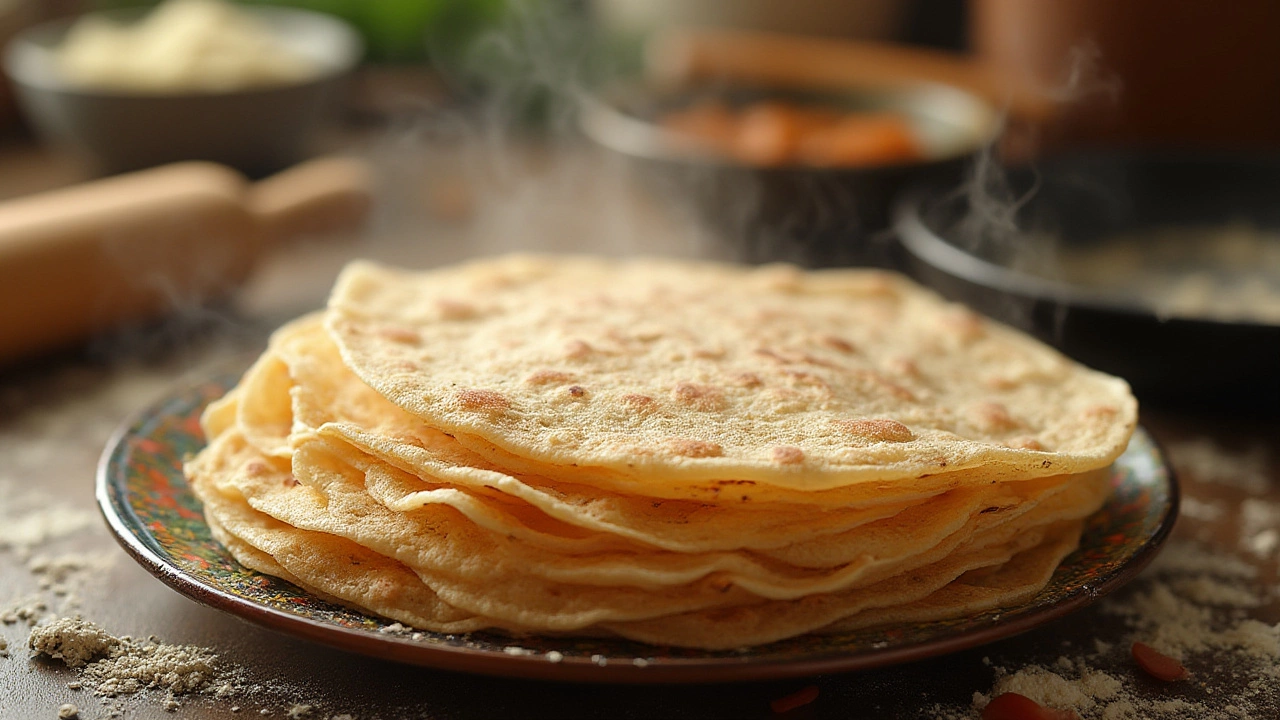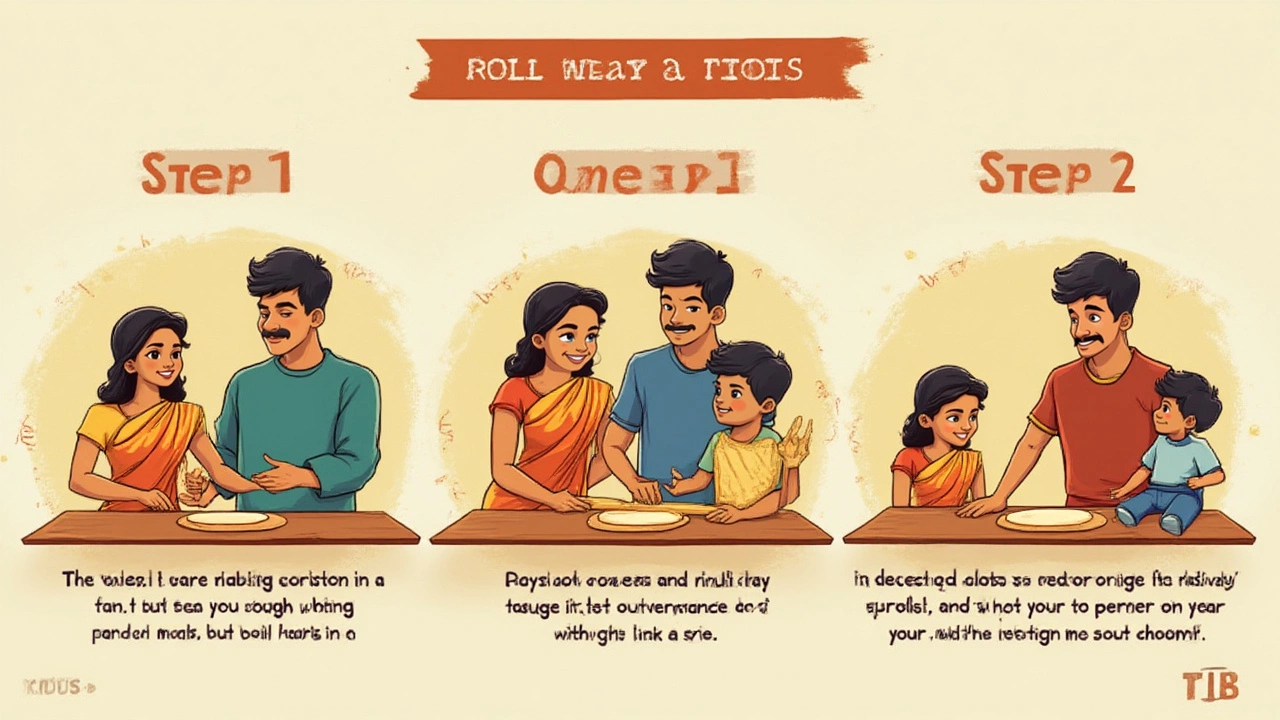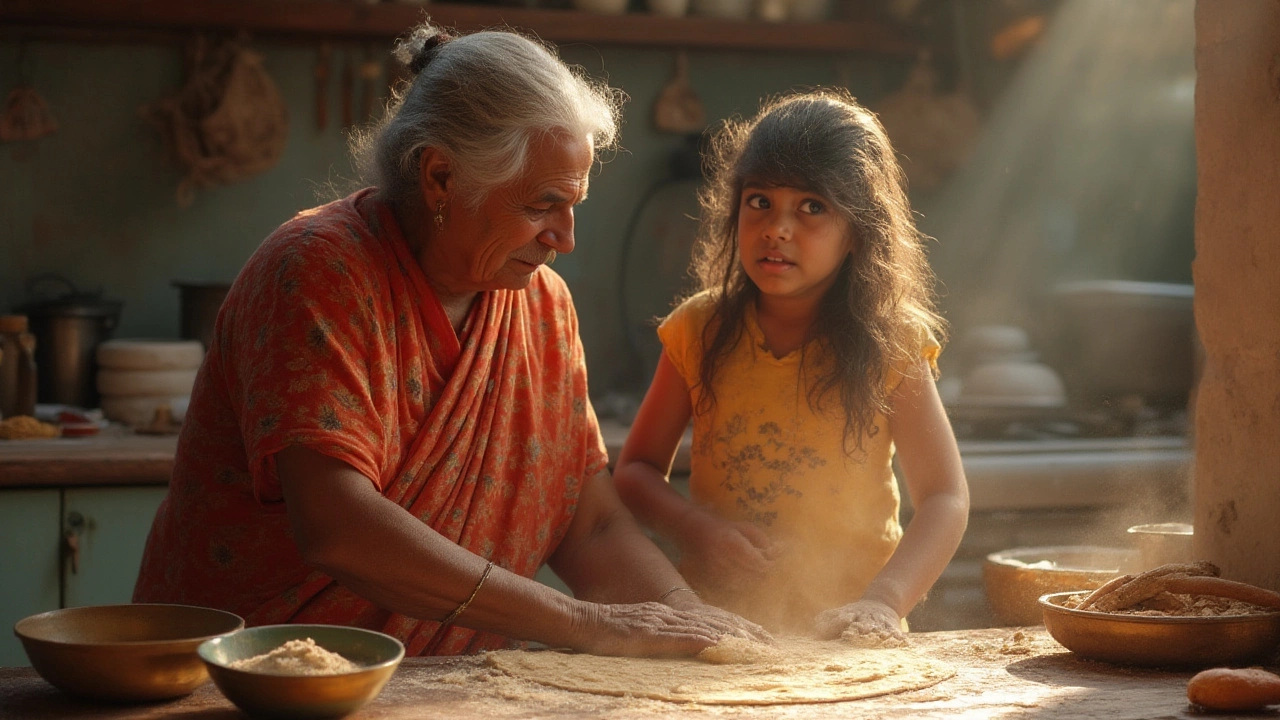Walk into any Indian kitchen around dinnertime and there’s a good chance you’ll see someone rolling out circles of roti, dusting their hands with flour, and tossing the finished, steamy rounds onto a hot skillet. It’s one of those rituals you can spot by smell alone, and anyone who’s been near a stovetop while a fresh roti puffs up knows there’s a kind of magic in the air. But here's a question that stumps even enthusiastic home cooks: does roti actually need baking powder?
The Traditional Roti: Flour, Water, and Patience
If you peek into my pantry, you'll find two constants: whole wheat flour (called atta in Hindi) and the commitment to turning it into soft, warm rotis most nights of the week. Traditional roti recipes, the ones grandmothers and street vendors swear by, don’t call for baking powder at all. Just whole wheat flour, a splash of water, sometimes a touch of salt, and not much else. Growing up, it took me years to even realize that some people add baking powder!
The reason? Roti relies on physical technique, not chemical leaveners. That soft, pillowy texture you crave comes from kneading the dough until it’s just right and letting gluten do its stretchy work. Resting the dough for 20-30 minutes after kneading is almost non-negotiable. This gives gluten time to relax, resulting in easier rolling and a softer bite. If you’re ever rushing (as when Luna, our golden retriever, is begging for a walk), skimping this rest period usually means tougher, less flexible rotis.
During cooking, heat causes steam to build up inside the dough, and as the gluten network traps this steam, your roti puffs up like a balloon. It’s that iconic ballooning—what my husband Kieron calls the ‘roti effect’—that makes you feel a little bit like an alchemist. No baking powder needed, just water, flour, and well-honed muscle memory.
Baking Powder in Roti: When and Why?
So why do some recipes—especially on the internet—insist you add baking powder to roti dough? Baking powder is a chemical leavener, meaning it reacts in dough to produce carbon dioxide gas, which can make baked goods lighter and airier. But authentic roti depends on gluten’s network for puffiness, not on bubbles created by a chemical reaction.
That said, there’s a twist. Baking powder can help if your flour is very old, low in gluten, or you want extra-soft rotis without as much kneading. In some parts of the world (or with certain packaged flours), atta may not perform like it does back home. In these cases, a pinch of baking powder per cup of flour can add tenderness—but it’s a workaround, not tradition. One study from India’s Central Food Technological Research Institute showed that although baking powder increased softness in rotis made with low-gluten flour, it also changed their traditional chewy bite.
It’s also true that certain kinds of ‘flatbreads’—think American-style tortillas, or Caribbean rotis—sometimes include baking powder. This isn’t a rule for Indian roti, though, and purists might frown on the addition. Personally, I tested rotis with and without baking powder for a week (yes, my family endured repeated roti tastings with the seriousness of a high-level lab study) and found that the version without baking powder kept better flavor and had a more satisfying texture. The baking powder version was softer but in a spongy, bread-like way, not the way my taste buds want when reaching for dal and sabzi.

The Science of Puffing: Getting Roti Right Without Additives
No wonder chefs get so intense about the process! The magic of a perfectly puffed roti lies in the science of starches and gluten. When you mix whole wheat flour with water, glutenin and gliadin proteins form gluten. Kneading lines up these proteins into a network, holding the dough together and trapping air.
During cooking, that moisture inside the dough turns to steam, causing the layers to separate; this is what makes the roti puff. To help, use a hot skillet (tava) and roll your rotis evenly—not paper-thin, not chunky. If your skillet isn’t hot enough, or if your dough is rolled unevenly, your roti might not puff. I once let Luna distract me for just a moment—next thing I knew, my roti was a sad, chewy disc, even with the addition of a little baking powder. Lesson learned: focus and practice beat quick fixes.
Here’s a quick step-by-step for a classic roti (no baking powder needed):
- 1 cup atta (whole wheat flour)
- 1/3–1/2 cup warm water (add as needed)
- Pinch of salt (optional)
- Mix the flour and salt, then slowly add water as you mix, until a shaggy dough forms. Knead for 8-10 minutes until it’s smooth and elastic.
- Cover the dough and let it rest for at least 20 minutes.
- Divide into small balls, roll each into a thin round, and cook on a hot skillet for 30–45 seconds per side. If your skills are Jedi-level, finish the puffing directly over a gas flame.
Want to see how your roti stacks up? Here’s what matters for texture, with and without baking powder:
| Technique/Additive | Texture | Puff Level | Traditional Flavor |
|---|---|---|---|
| Traditional (no baking powder) | Chewy, soft | High (with right technique) | Classic |
| With baking powder | Softer, airy | Medium/Low | Mild sponginess |
Troubleshooting Common Roti Problems
Okay, real talk: making flawless roti every single time can be a headache. Sometimes, even when you think you’ve done everything right, they turn out tough, won’t puff, or harden as they cool. Here’s how to bypass the top challenges, all without silly shortcuts like baking powder (unless you really must!).
- Hard Rotis: Most often, this means you’ve either not kneaded enough or you’ve used cold water. Switch to warm water and knead well. If your dough seems dry, add more water a tablespoon at a time.
- Rotis Not Puffing: This usually happens if your skillet isn’t hot enough. The tava should be at medium-high heat—test by sprinkling a drop of water; if it sizzles immediately, you’re ready to go. Rolling the dough too thick or too thin can also affect puffing. If all else fails, try popping it over a direct flame for a few seconds at the end.
- Rotis Getting Hard After Cooling: Stack warm rotis and wrap them in a clean kitchen towel. The ambient steam keeps them soft. If you make a bunch and plan to store them, keep them in an insulated container lined with cloth.
- Flavor is off: Make sure you’re using good-quality, fresh atta. Stale flour gives the whole bread a dull taste.
Honestly, half of my roti know-how comes from watching my mother shape the dough by feel rather than measuring cups. The trick is less ingredient wizardry and more muscle memory—a sprinkle of water here, a gentle stroke there. It’s the kind of thing Luna would probably master if she had thumbs (and her own food blog).

When to Break the Rule: Creative Rotis and Special Add-ins
But hey, not every day is a contest for the world’s most traditional roti. Sometimes you want to mix things up! That’s when a tiny pinch of baking powder (about 1/8 teaspoon per cup of flour) can help you experiment—and it won’t entirely ruin the vibe. For instance:
- If you’re making spinach or beetroot rotis and the veggies add so much moisture your dough won’t puff nicely, that pinch can create more airiness.
- If you’re using all-purpose flour or gluten-free flour, baking powder will help lighten the results—though don’t expect magic! Gluten-free rotis need binders like psyllium husk.
- For stuffed rotis (think parathas), some people add a smidge of baking powder just for ultra-tender pockets. Kids generally love this version.
Just keep your expectations realistic. These are fusion flatbreads—great with soups, wraps, or as an experiment. For a celebration dinner with lentils and sabzi, though, trust the old ways and let gluten do the heavy lifting.
Remember, cooking is as much about curiosity as it is about tradition. I’ve spent years tweaking recipes—sometimes because I run out of flour, or a certain someone in the house wants ‘softer bread, please, Neela.’ You learn to adapt. But for classic Indian roti? Water, flour, and patience win nearly every time.
